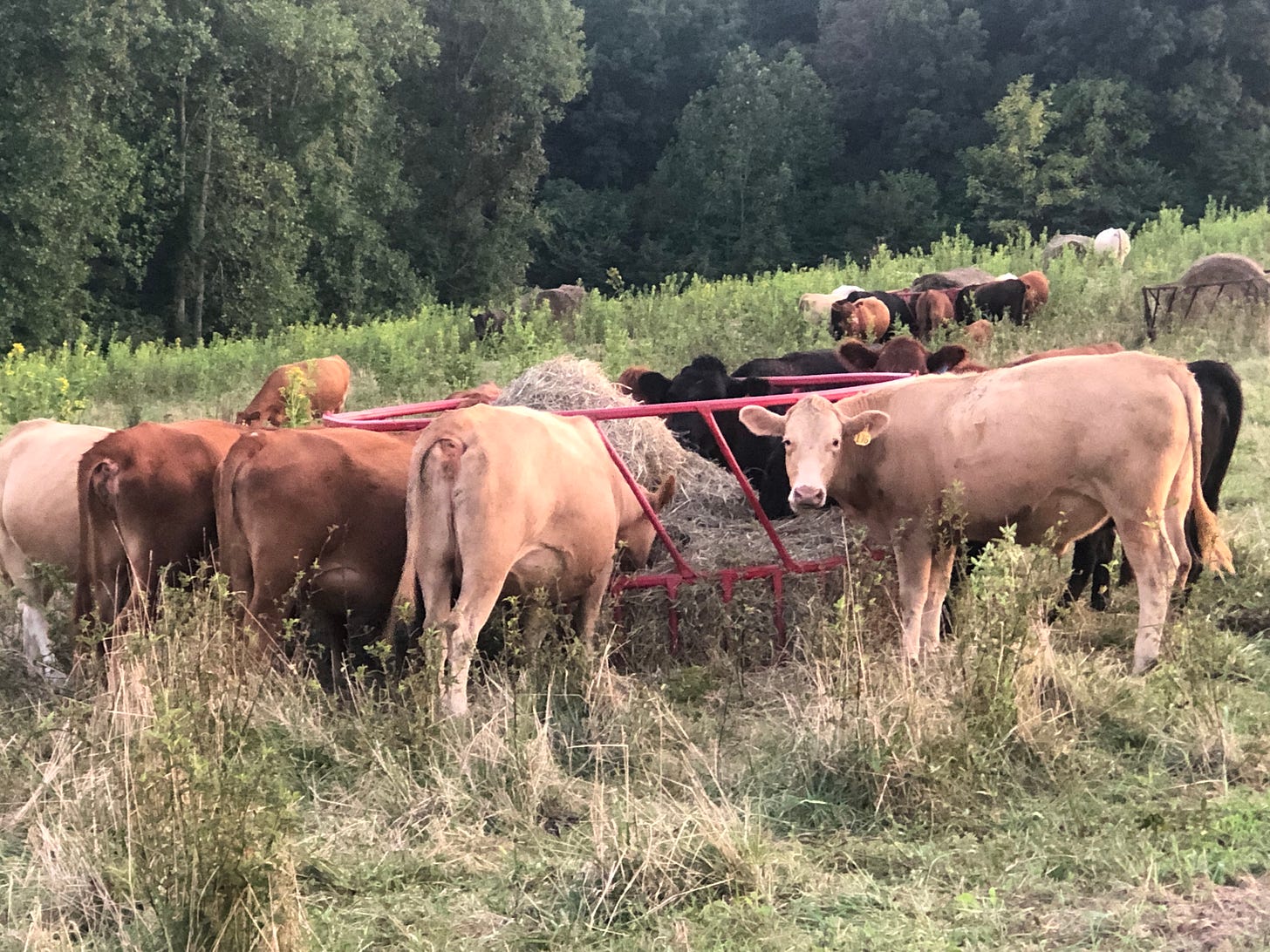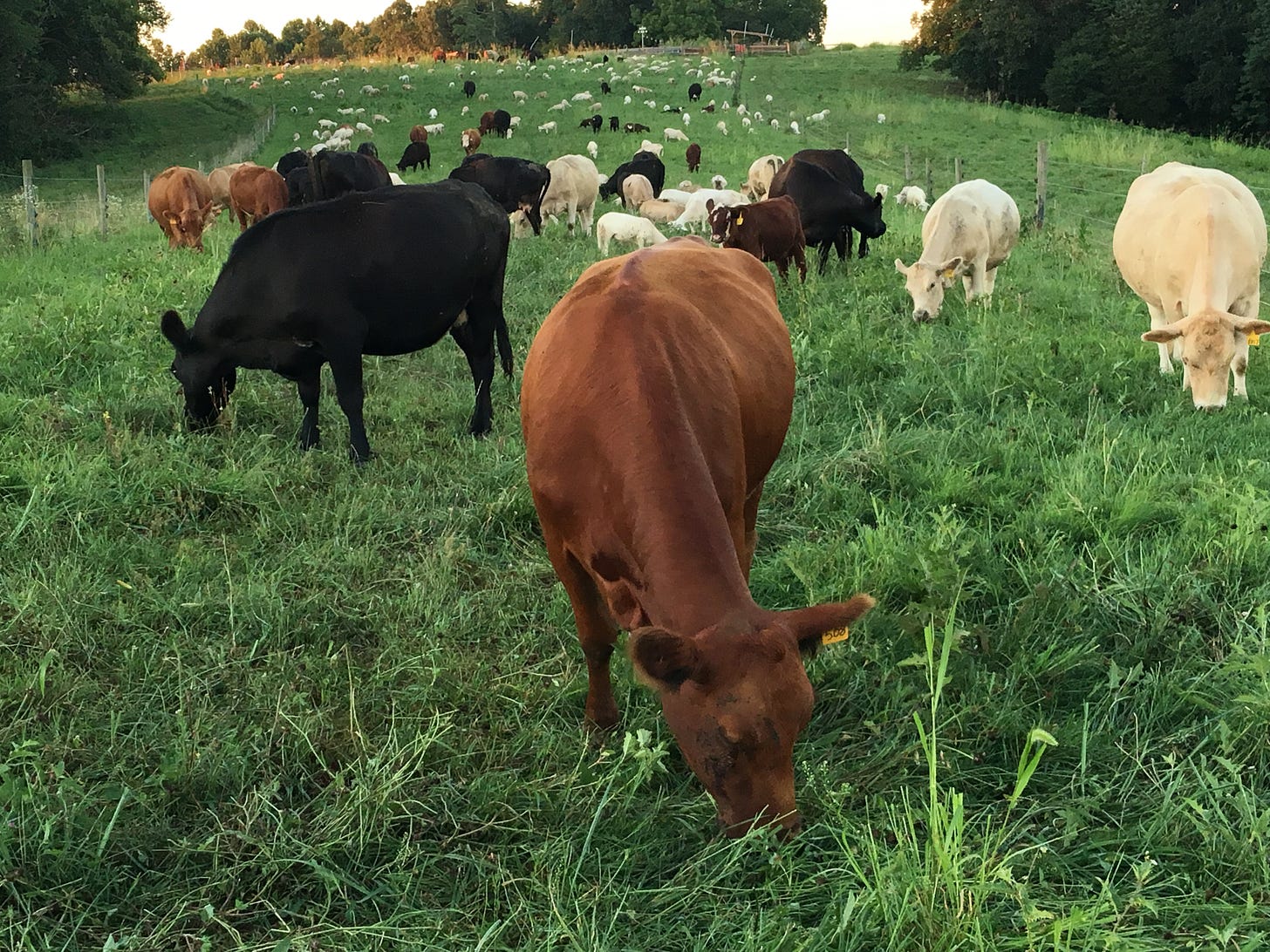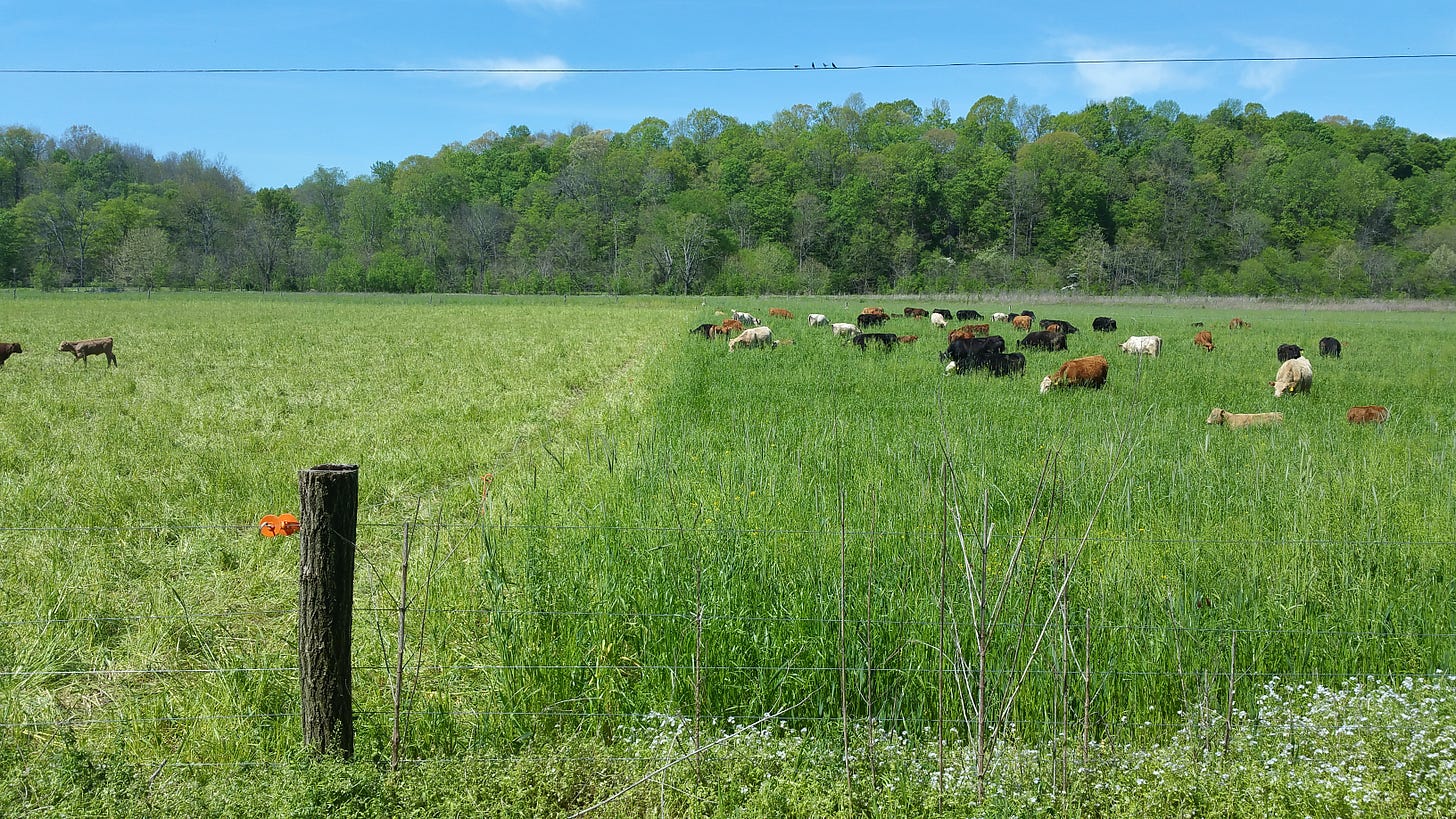Fall Hay Feeding
Why in the world would you feed hay in the fall when you could be grazing? Fall hay feeding may be counter-intuitive, but the benefits can be advantageous, especially if your pastures are already grazed to a minimum grazing height (3” for tall fescue and 4” for orchard grass). Maintaining minimum grazing height is always a benefit, but it can pay the most in the fall. Fall growth can significantly reduce cattle costs by reduced hay feeding. By feeding hay in September and October and not grazing over 20% of our pastures, we can stockpile fall growth on the remaining 80% of our pastures. This time of year, pastures can grow 20-40 pounds of forage per acre per day, so it’s possible to grow up to twice as much forage as the hay we would feed in the same period. In January, we can’t grow grass, so fall hay feeding extends the growing season, and less hay is fed during times we can’t grow grass. Feed the hay on lower fertility pastures or weedy fields.
TOP THIRD GRAZING
Top third grazing is my preferred grazing method, but with higher stocking, I somehow slip into “take half leave half.” To get the full benefits of third top grazing, you needed to start this method sometime in June or July. That way, you could graze instead of fall feeding.
CREATE A MIRACLE – PROTECT MINIMUM GRAZING HEIGHT IN THE WINTER
If you want to see a miracle performance of your pastures in spring, don’t graze below 4 inches throughout the winter. Begin grazing after the grass is 6-8” tall with dense growth. Forage growth will be 2- 4 weeks later when pastures are grazed lower. I don’t like any pastures to be grazed below 2” in the winter.
You can experiment by removing stock from some of your pastures while the grass is still 4” tall. The most significant benefits come when the soil has organic matter of 3% or higher, pH of 6.2 to 7.2, P and K in the medium-high range.
HAY AND THE DOWNWARD SPIRAL
It is easy to fall into the trap of needing more hay. Hay is an extractive process, removing nutrients from the soil and transporting those nutrients to the ground where the hay is fed. The ruminant animal returns 85% of nutrients to the land, which hit the field with good management. Otherwise, they are a potential environmental issue and don’t aid in sustaining or improving soil fertility. Without adding nutrients back to the hay fields, yields drop, and the need for more hay land increases and pastureland decreases. Before you know it, more and more land goes into hay production, and you have less pasture, thus continuing the downward spiral.
A general balanced spread of land is 2/3rds pasture and 1/3 hay. Although it is admirable to produce all of your needs from your own land, I recommend buying your hay. The available nutrients (N,P,K) in hay are typically worth about 2/3rds of the cost of the hay. Buying hay allows you to graze all of your land and bring in nutrients from another farm. One downfall to this idea is that you’re also possibly bringing in weed seeds. Oh well, you can use them as an excuse and blame those weeds on someone else. Or are they forbs?
GROUNDING YOUR ELECTRIC FENCE
Everyone agrees the biggest issue with most electric fencing is the grounding, assuming you start with a charger with enough joules.
SIZING A CHARGER
Ideally, buy a charger that has one joule per mile of fence wire. The next rule of thumb is to have one ground rod per joule. That works fine for chargers less than 10 joules, but my charger is a 36 joule, and I don’t want to put in 36 ground rods. Another method of checking to see if you have enough ground rods is to ground out the fence about 300’ from the charger with something like a steel post, then test the ground rod, and it shouldn’t have over 500 volts on the ground rod. Some of my electric fencing is now more than 40 years old, so some maintenance was in order. We added several ground rods and, with a bit of clean-up, we increased the charge by 4,000 volts.
My dad always said, “the best fence is good grass,” but we don’t want to be limited by our fence. Another of my dad’s sayings was, “you don’t want your fences to be too good; otherwise, they can’t get back in.”
In summary, inventory and manage what you have; consider planting something that fills a void in your forage chain, natural or planted.
Respect minimum grazing heights and graze at a stock density of 10,000 lb or higher per acre with an average grazing period of 1-3 days and an average recovery period of 45 days. Maintain fertility in the medium range with a pH of 6.2 to 7.2.
Fall Seeding
Where I have a mediocre stand of perennial grass and lots of legumes. I plan to seed the following mix in early September.
Species Pounds per ac
Cereal rye 40
Barley 40
Wheat 20
Ryegrass 8
Chicory 1
Forage turnip 1
Buckwheat 1
Sunflower 1
Perennial pasture is the cheapest source of pasture; however, if you have excessive legumes, it’s hard to establish perennials since perennial grasses are slower to establish than annuals. Forage annuals cost about the same, per pound, as hay, but annuals are about 2x the quality. It’s essential to do good grazing management with multi-paddock grazing so you can ration and control access of livestock to the annuals.
This phenomenon is why most land grant universities advise only establishing perennial grass in the fall and then following up with legumes seeded in late winter or early spring. They also don’t recommend seeding annuals with perennials since the annuals also outcompete the perennial grass.
During the grass-clover cycle, drill in other perennials when legumes begin to wane.



